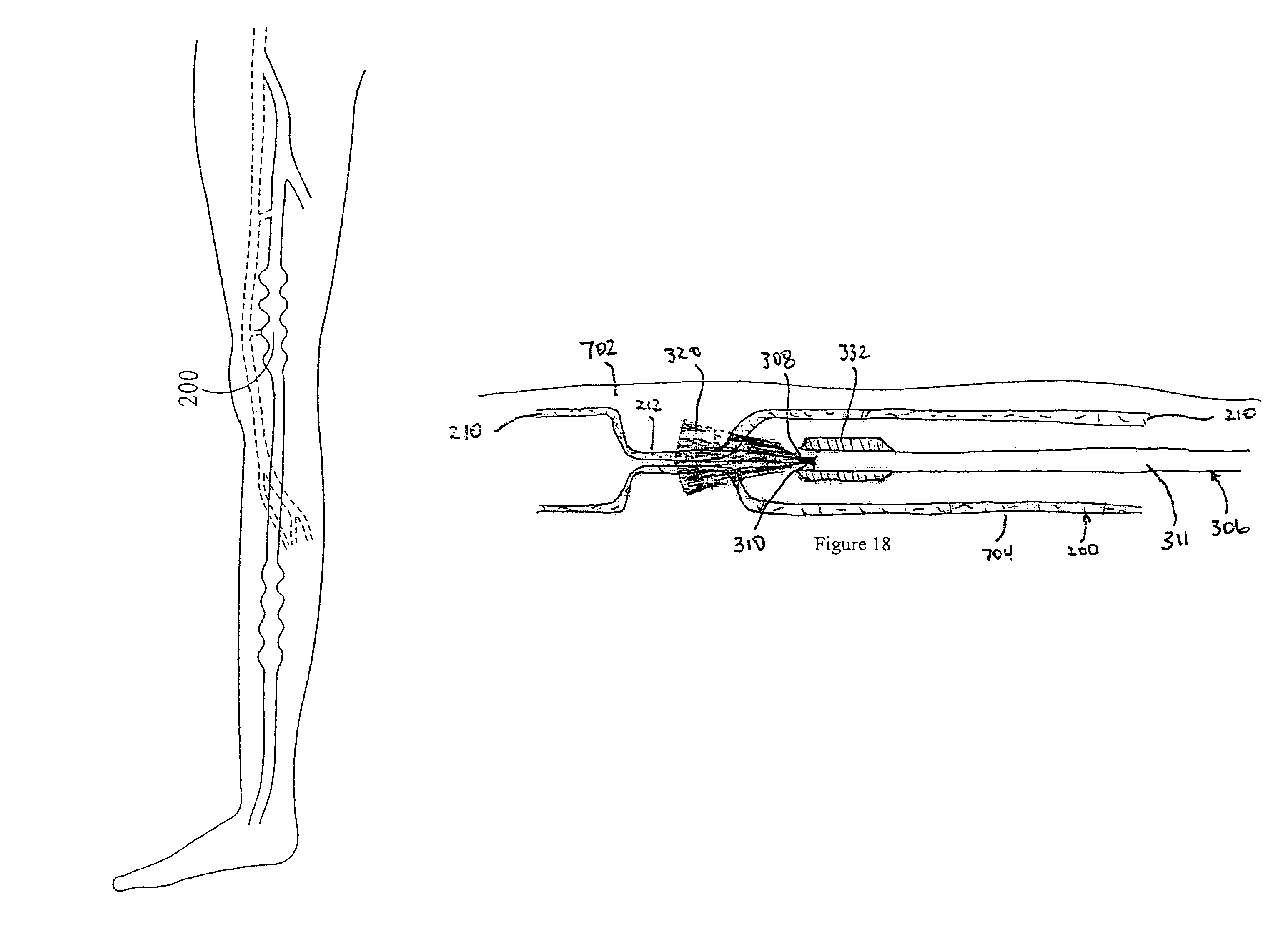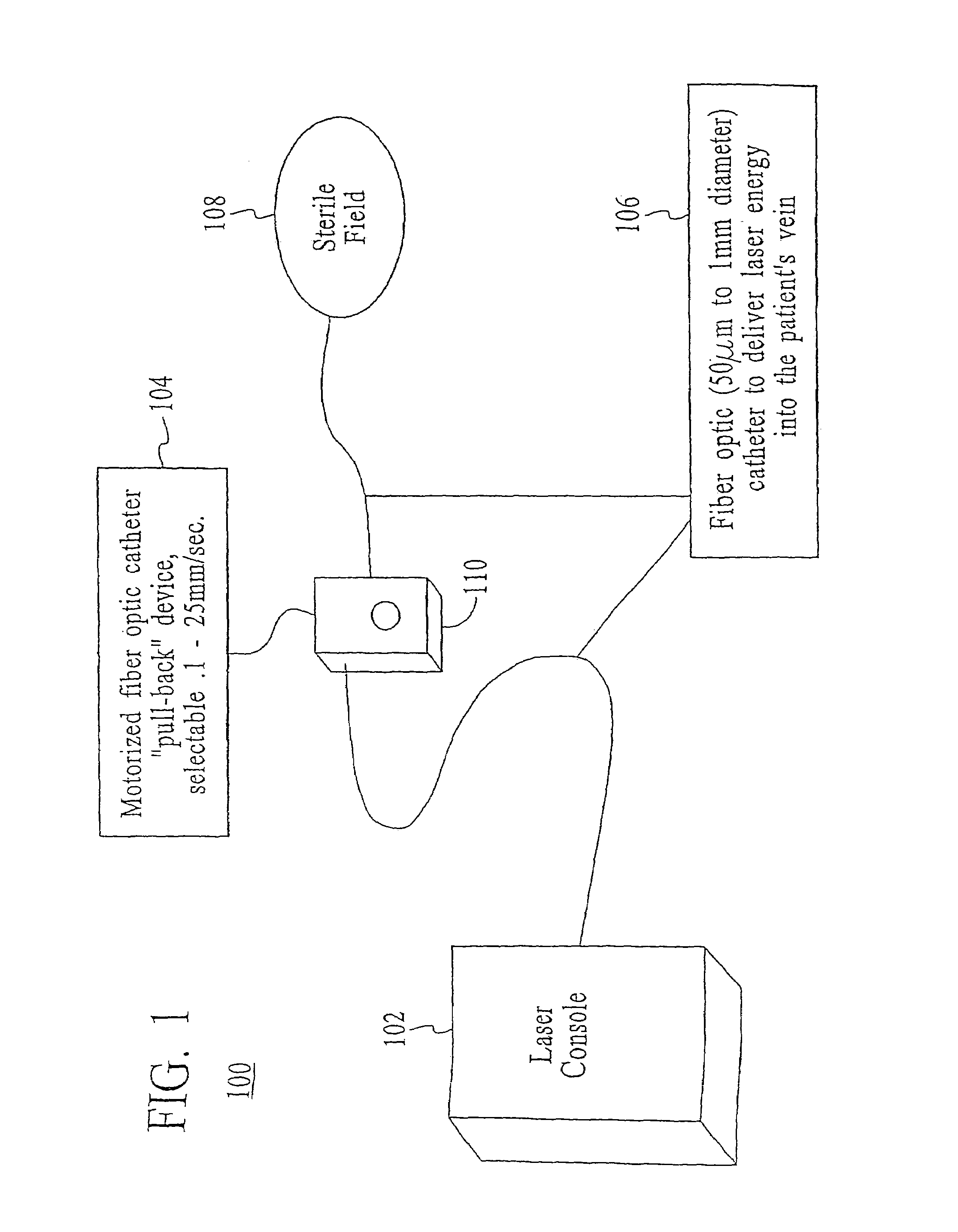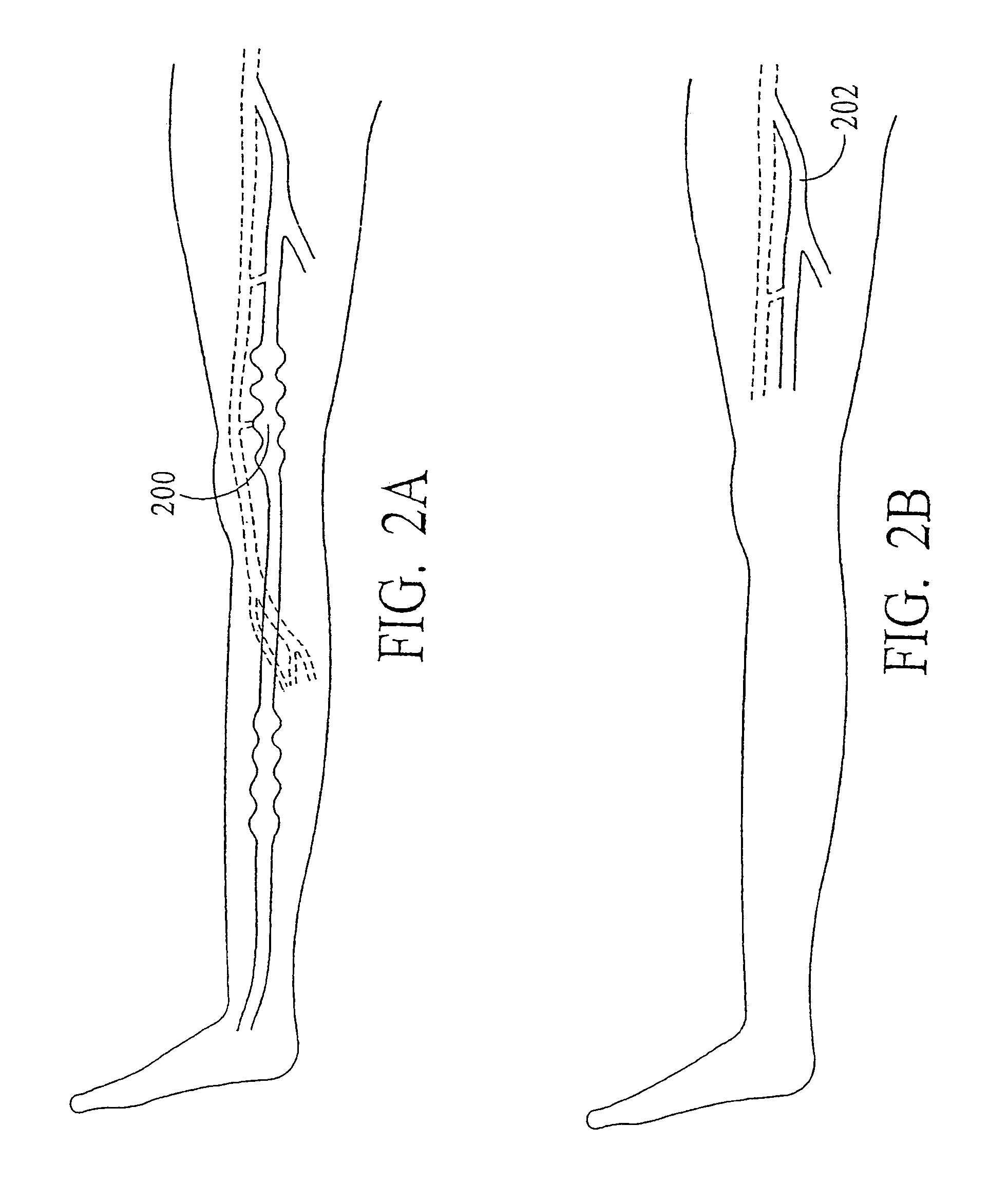Endovenous closure of varicose veins with mid infrared laser
a laser and varicose vein technology, applied in the field of varicose vein vein laser assisted method and apparatus, can solve the problems of destroying endothelial cells, limiting the efficiency of heat transfer to the vessel wall, and requiring expensive and complicated catheters, so as to prevent damage to surrounding tissue and perforation of the vessel, less energy to be used, and more predictable and controllable
- Summary
- Abstract
- Description
- Claims
- Application Information
AI Technical Summary
Benefits of technology
Problems solved by technology
Method used
Image
Examples
first embodiment
[0100]Turning to FIG. 17, a protective spacer 331 is in the form of a molded body formed near the tip 308 of the fiber optic catheter 306. The fiber optic catheter 306 includes a fiber optic core 310 and a protective outer jacket 311. The fiber optic core 311 typically has a diameter of from about 150 to about 600 um, and the catheter jacket 311 typically has a diameter of from about 300 to about 800 um. The spacer 331 typically has a diameter of from about 400 um to about 1200 um. The spacer 331 is preferably formed from an epoxy, a UV setting cement, or other material suitable for molding onto the external surface of the fiber optic catheter 306. The material used to construct the molded spacer 331 is preferably opaque. The example shown in FIG. 15 is a bulb-shaped molded epoxy spacer 331. As shown in FIG. 15, the spacer 331 is formed on the outer surface of the jacket 311 of the catheter near the tip 308 of the optic fiber 310, but it does not cover the tip 308 or otherwise inter...
second embodiment
[0101]Turning to FIG. 18, a protective spacer 332 is in the form of a plastic ring or sleeve attached at or near the tip 308 of the fiber optic catheter 306. The fiber optic catheter 306 includes a fiber optic core 310 and a protective outer jacket 311. The fiber optic core 310 typically has a diameter of from about 150 to about 600 um, and the catheter jacket 311 typically has a diameter of from about 300 to about 800 um. The spacer 332 typically has a diameter of from about 400 um to about 1200 um. The spacer 332 is preferably formed of a plastic, such as teflon, nylon, delrin, polyimide, or other suitable plastic material, and is preferably opaque. Alternatively, the spacer 332 may be of stainless steel or some other biocompatible metal. The spacer 332 is generally cylindrical and may be tapered or rounded at its proximal and distal ends. The spacer is glued, fused, or otherwise attached to the external surface of the jacket 311 of the catheter near the tip 308 of the optic fiber...
third embodiment
[0102]Turning next to FIG. 19, a protective spacer 333 is in the form of a metal or plastic tube that is selectively detachable to the fiber optic catheter 303. The fiber optic catheter 306 includes a fiber optic core 310 and a protective outer jacket 311. The fiber optic core 310 typically has a diameter of from about 150 to about 600 um, and the catheter jacket 311 typically has a diameter of from about 300 to about 800 um. The spacer 333 typically has a diameter of from about 400 um to about 1200 um. The spacer 333 is preferably formed of a biocompatible metal such as stainless steel, or a hard plastic. The spacer 333 is generally cylindrical, preferably has a length of from about 3 to about 5 mm, and is provided with threads 340 on its internal surface that are adapted to engage threads 342 formed on the external surface of the outerjacket 311 of the fiber optic catheter 306 near its tip 308. The distal end of the spacer 333 is preferably flush with the laser-emitting tip308 of ...
PUM
 Login to View More
Login to View More Abstract
Description
Claims
Application Information
 Login to View More
Login to View More - R&D
- Intellectual Property
- Life Sciences
- Materials
- Tech Scout
- Unparalleled Data Quality
- Higher Quality Content
- 60% Fewer Hallucinations
Browse by: Latest US Patents, China's latest patents, Technical Efficacy Thesaurus, Application Domain, Technology Topic, Popular Technical Reports.
© 2025 PatSnap. All rights reserved.Legal|Privacy policy|Modern Slavery Act Transparency Statement|Sitemap|About US| Contact US: help@patsnap.com



